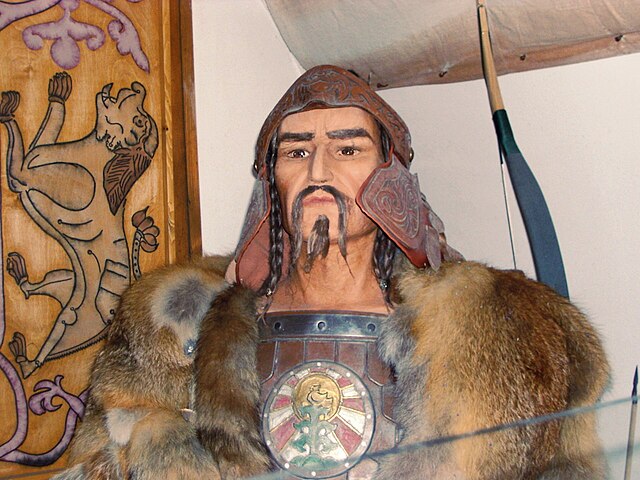Attila, frequently called Attila the Hun, was the ruler of the Huns from 434 until his death, in March 453. He was also the leader of an empire consisting of Huns, Ostrogoths, Alans, and Bulgars, among others, in Central and Eastern Europe.
King Attila (Chronicon Pictum, 1358)
A painting of Attila riding a pale horse, by French Romantic artist Eugène Delacroix (1798–1863)
Figure of Attila in a museum in Hungary
Huns in battle with the Alans. An 1870s engraving after a drawing by Johann Nepomuk Geiger (1805–1880).
The Huns were a nomadic people who lived in Central Asia, the Caucasus, and Eastern Europe between the 4th and 6th centuries AD. According to European tradition, they were first reported living east of the Volga River, in an area that was part of Scythia at the time. By 370 AD, the Huns had arrived on the Volga, causing the westwards movement of Goths and Alans. By 430, they had established a vast, but short-lived, empire on the Danubian frontier of the Roman empire in Europe. Either under Hunnic hegemony, or fleeing from it, several central and eastern European peoples established kingdoms in the region, including not only Goths and Alans, but also Vandals, Gepids, Heruli, Suebians and Rugians.
Arrival of the Huns in Pannonia (Chronicon Pictum, 1358)
A reconstruction of Attila by George S. Stuart, Museum of Ventura County.
The depicted battle is the legendary Battle of Zeiselmauer when the Huns conquered Pannonia from the Romans (Chronicon Pictum, 1358)
A nineteenth century depiction of Attila. Certosa di Pavia – Medallion at the base of the facade. The Latin inscription tells that this is Attila, the scourge of God.








